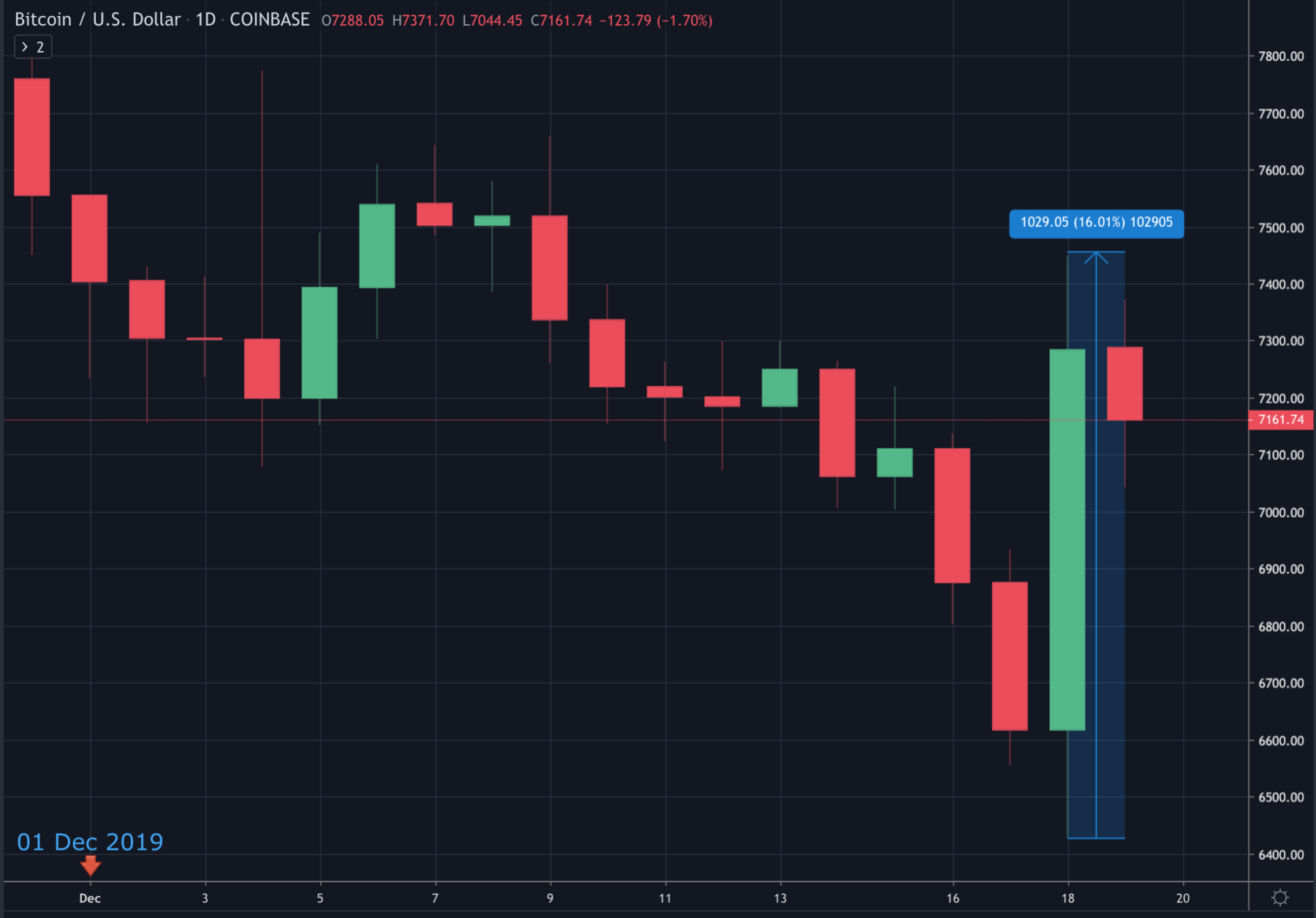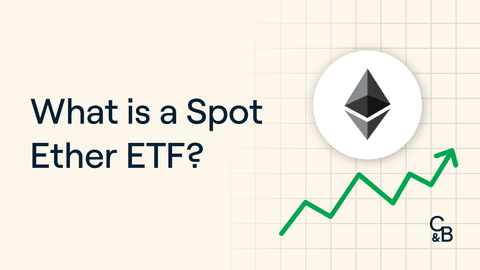On September 15, 2022, Ethereum’s long-awaited Merge was executed, marking the network’s transition from a Proof of Work (PoW) to Proof of Stake (PoS) consensus mechanism. As this content was written pre-Merge, any mentions of Ethereum using PoW are in reference to the network’s previous consensus mechanism, not its current one.
Recent movements in Bitcoin and how this has impacted the Market.
After two weeks of price decline from mid-7000s, Bitcoin has exhibited a 15% low to high recovery candle, creating short term support at 6500 in line with the November 25 recovery. For the month ahead, if we continue the bear trend, $6000 remains a significant support level to keep an eye on. This dates back to the support level tested numerous times during the 2018 bear market. It can be viewed as a short-term entry-level for day traders but a break below it could cause serious concern of 2018 lows as volume below $6000 has historically been thinly traded (low trade volume). The Bitcoin halving event, as mentioned in a previous newsletter, will likely bring significant volatility to the market. This can be followed closely via this link: https://www.bitcoinblockhalf.com/
In typical fashion, recent movements in Bitcoin have directly impacted the rest of the market. Its large drop in price and quick recovery in the last few days have been mirrored by the Alt Coin market. As such, following key indicators and movements in Bitcoin can provide greater clarity on the collective Cryptocurrency market performance.

2019, a year of Exchange hacks
As we wind up 2019 we can look back on what has made for a rather crazy year. With plenty of news, updates, highs and lows there has been one regrettable event in the space which continues to loom. This being exchange hacks. The Cryptocurrency space in its adolescence has seen the rise and fall of many projects and businesses. As a space with such vast technology and opportunity, regrettably, we see all too often that people can fall victim to the elaborate scams and devious hacks that tarnish this industry. As there is still lacking infrastructure surrounding the space relative to the money involved, Cryptocurrency exchanges are a paradise for hackers.

If you have any concerns regarding your security standards, please contact us so we can help. It is critical that we do our best to ensure clients are not victim to the dubious and risky elements of this space.
What is happening with Ethereum? 'Casper' explained
‘Casper’ refers to the implementation of a ‘Proof of Stake’ Blockchain that will dramatically convert the underlying technology of Ethereum. Ethereum was launched in the summer of 2015 as a Proof of Work (PoW) Blockchain. This means that miners compete against each to verify transactions on the network, the success of which is rewarded. This algorithm has been integral to Ethereum’s functionality. However, as a part of Ethereum’s growth trajectory, original developers were already planning a transition away from the Proof of Work model. After the transition is complete, mining will no longer be part of the Ethereum network. Rather, the network will operate via the Proof of Stake algorithm. This means that the verification and validation of new blocks of transactions will be done by block 'validators', which will be selected according to their Ethereum stake. In other words, the voting power of each validator will be determined by the amount of ETH they stake. For example, someone who has deposited 64 ETH will have double the voting power of someone who deposited 32 ETH (The minimum staking amount).
Proof of Stake is more energy efficient which allows the network to scale dramatically. Further to this, validators need to own and hold Ethereum, they need to ‘have skin in the game’. Unlike miners, validators will have to purchase and hold a significant amount of ETH as the probability to receive the network fees is directly correlated to the amount of ETH staked. With Ethereum owners incentivised to stake their tokens, the circulating supply will likely reduce, causing less selling pressure. Please note that it is still early days and the 'Casper' development plans will likely be subject to changes. Nonetheless, these developments are a positive sign for the growth Ethereum is likely to achieve in the long term. Especially since the Ethereum foundation sold 70,000 units of Ethereum in late 2017 for a value of $100 million USD.
https://thenextweb.com/hardfork/2019/12/16/vitalik-buterin-ethereum-foundation-ethere-100m/
This large sale enables the foundation to support the growth of Ethereum for years to come. It is critical that we look at projects as businesses since their long-term growth is heavily dependent on their capacity to meet key performance indicators, create products and demonstrate value. Speculation, as we know, has taken a number of projects quite far in terms of raising capital and achieving large valuations. However, it is their capacity to build beyond this which will define their success to come.






